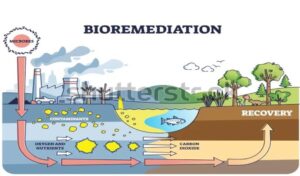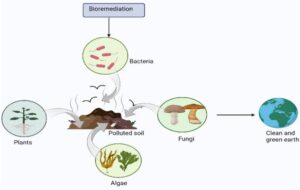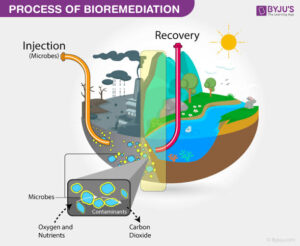Back to: Environmental Biology 400 Level
Welcome to class!
Picture this: A large factory in Lagos releases thick black smoke into the air, pollutes the nearby river, and leaves heaps of untreated waste behind. Now imagine if that same factory used smart systems to clean its smoke, treat its wastewater, and recycle its waste. That is the power of pollution control technologies—simple solutions that protect both people and the planet. In today’s class, we’ll look at the different technologies used to manage and reduce pollution in air, water, and land.
Bioremediation And Environmental Cleanup
What Are Pollution Control Technologies?
Pollution control technologies are systems, tools, and methods used to reduce or eliminate harmful pollutants released into the environment. They help to clean up emissions, prevent contamination, and ensure that waste is properly handled before it causes damage.

Air Pollution Control Technologies
These are designed to remove or reduce pollutants from industrial emissions, vehicle exhaust, and indoor air sources.
Electrostatic precipitators: Remove particles from smoke by charging and collecting them. Used in cement and steel factories.
Scrubbers: Spray liquids into gas streams to wash out harmful gases like sulphur dioxide.
Catalytic converters: Installed in vehicles to reduce carbon monoxide, nitrogen oxides, and hydrocarbons.
Baghouse filters: Trap dust in industries like textiles and cement production.
Water Pollution Control Technologies
These help purify water used in industries, homes, and agriculture.
Effluent treatment plants (ETPs): Treat industrial wastewater before release into rivers.
Sewage treatment plants (STPs): Clean household and city wastewater.
Constructed wetlands: Use natural plants and soil microbes to treat wastewater, especially in rural or peri-urban areas.

Oil-water separators: Used in petrol stations and garages to remove oil from water.
Soil and Solid Waste Control Technologies
These technologies help reduce the impact of solid waste, industrial discharge, and agricultural chemicals.
Sanitary landfills: Properly designed pits with liners to prevent leakage into soil and groundwater.
Composting: Converts organic waste like food and farm leftovers into useful manure.
Recycling plants: Turn plastic, glass, paper, and metal waste into new products.
Bioremediation: Uses bacteria or fungi to clean oil spills or pesticide-contaminated soil.
Nigerian Context and Examples
In Port Harcourt, air filters and scrubbers are being encouraged in industries to reduce soot pollution.
Lagos State Waste Management Authority (LAWMA) uses compactor trucks and recycling hubs to manage waste.
Dangote Group has adopted electrostatic precipitators in its cement plants to reduce dust pollution.
Kano Leather Industries have begun installing wastewater treatment units to reduce toxic discharge.
Challenges in Adoption
High cost of equipment and maintenance

Poor enforcement of environmental regulations
Lack of technical expertise and awareness
Limited government incentives for clean technologies
Summary
- Pollution control technologies reduce or eliminate environmental pollutants.
- Air pollution is controlled using scrubbers, filters, and catalytic converters.
- Water pollution is managed through treatment plants, wetlands, and oil separators.
- Solid waste and soil pollution are addressed with landfills, recycling, and bioremediation.
- Nigeria is gradually adopting these technologies despite financial and technical challenges.
Evaluation
- What are pollution control technologies?
- Name two technologies used to control air pollution.
- How does an effluent treatment plant work?
- Mention two challenges facing pollution control in Nigeria.
- Give one Nigerian example of pollution control technology in use.
You’re truly expanding your mind and skillset! Every solution you learn today brings us closer to a cleaner, healthier Nigeria. Keep your passion alive—Afrilearn believes in your power to make a difference!
